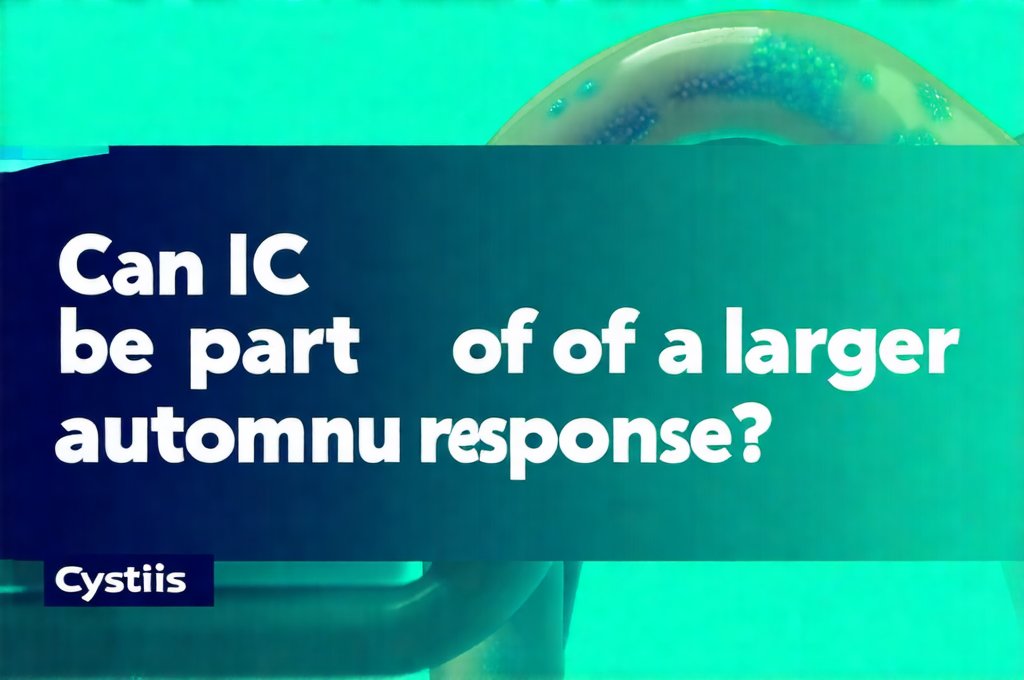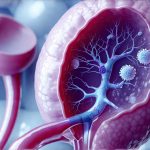The intricate relationship between the immune system and various diseases is constantly being unraveled by researchers. While autoimmune responses are typically understood as attacks against specific tissues or organs – like in rheumatoid arthritis targeting joints or type 1 diabetes attacking pancreatic cells – there’s growing evidence suggesting a more complex interplay, where seemingly disparate conditions might be linked through underlying immunological mechanisms. This raises the question: can immune challenges triggered by one factor, such as an initial infection with Infectious Mononucleosis (IM), potentially set off or exacerbate autoimmune responses elsewhere in the body? The implications of this are significant, impacting diagnosis, treatment strategies and our overall understanding of chronic illness.
Understanding these connections is crucial because traditional diagnostic approaches often focus on individual diseases rather than the broader immunological context. A patient might be diagnosed with multiple separate conditions when, in reality, they represent different manifestations of a single underlying autoimmune dysregulation. Moreover, current treatments are frequently targeted at managing symptoms of individual diseases instead of addressing the root cause – the aberrant immune response itself. This exploration delves into the possibility that IM and other infections can act as triggers within a larger autoimmune landscape, potentially contributing to conditions beyond their initial scope, and how immunological memory may play a role in this process.
The Role of Infectious Mononucleosis (IM) as an Autoimmune Trigger
Infectious Mononucleosis, commonly known as “mono,” is typically caused by the Epstein-Barr virus (EBV). While often considered a self-limiting illness of adolescence, mounting research suggests it can have long-lasting immunological consequences. EBV is adept at establishing latency within B cells – a type of immune cell – and maintaining a persistent presence in the body. This chronic viral load, even without active symptoms, can continually stimulate the immune system, potentially leading to molecular mimicry or bystander activation. Molecular mimicry occurs when viral proteins resemble host proteins, causing the immune system to mistakenly attack healthy tissues. Bystander activation involves the immune response to EBV inadvertently targeting nearby self-antigens.
The impact of IM extends beyond acute infection. Studies have shown a statistically significant association between EBV infection and an increased risk of developing autoimmune diseases like multiple sclerosis, rheumatoid arthritis, systemic lupus erythematosus, and Crohn’s disease. The exact mechanisms driving this link are still under investigation but likely involve a combination of factors: chronic immune stimulation, altered B cell function, and the potential for epitope spreading – where the immune response expands to target new self-antigens over time. It’s important to note that EBV isn’t necessarily the cause of these diseases; rather, it can act as an environmental trigger in genetically susceptible individuals.
Furthermore, post-infectious autoimmunity is not limited to EBV. Other viral infections like Cytomegalovirus (CMV) and even certain bacterial infections have also been implicated in triggering autoimmune responses, highlighting the broader concept of infection-induced autoimmunity. The immune system’s response to these pathogens can sometimes inadvertently cross-react with self-tissues, leading to chronic inflammation and disease development. This underscores the importance of considering a patient’s infectious history when evaluating unexplained autoimmune symptoms. It might be relevant to investigate if can urinalysis can help in early diagnosis.
Immunological Memory and Chronic Autoimmune Manifestations
A key component in understanding how initial infections might contribute to broader autoimmune responses is immunological memory. When the immune system encounters a pathogen, it creates memory cells – both B cells and T cells – that “remember” the encounter. This allows for a faster and more effective response upon re-exposure. However, this very mechanism can also contribute to autoimmunity if the initial infection triggers an inappropriate or excessive immune response. The persistent presence of EBV in latent form continuously activates these memory cells, maintaining a state of low-grade inflammation that could exacerbate autoimmune conditions.
The role of B cell activation is particularly relevant here. As mentioned earlier, EBV establishes latency within B cells, leading to their chronic stimulation. This can result in the production of autoantibodies – antibodies that target self-antigens – even years after the acute infection has resolved. These autoantibodies can contribute to tissue damage and inflammation, driving autoimmune disease progression. Moreover, dysregulation of B cell tolerance mechanisms – the processes that prevent the immune system from attacking its own tissues – may also play a role in this process.
The concept of “molecular mimicry” is again central to understanding this phenomenon. If the initial infection induces antibodies or T cells that cross-react with self-antigens, subsequent activation of immunological memory can perpetuate this autoimmune response. This explains why some individuals experience flares of autoimmune symptoms following viral infections – even mild ones – years after their initial diagnosis. The reactivation of these immune memories can amplify the attack on healthy tissues and worsen disease severity. In some cases, can recurrent UTIs be an indicator of a more severe underlying issue?
Autoantibody Profiles & Cross-Reactivity
Autoantibodies are often considered hallmarks of autoimmune diseases, providing valuable diagnostic clues. However, identifying specific autoantibody profiles is becoming increasingly complex. Traditional testing focuses on antibodies targeting well-defined self-antigens but doesn’t always capture the full spectrum of autoimmune reactivity. Newer technologies are emerging that allow for a more comprehensive assessment of autoantibody populations, including those targeting less common or previously unknown antigens.
The concept of cross-reactivity is critical in this context. Autoantibodies initially generated against viral antigens can sometimes bind to self-antigens with similar structural features. This cross-reactivity can lead to the development of autoimmune symptoms even if the original infection has resolved. For example, antibodies produced against EBV’s gp350 protein have been shown to cross-react with certain proteins in the nervous system, potentially contributing to neurological manifestations like multiple sclerosis.
Furthermore, autoantibody profiles can change over time, reflecting the evolving nature of autoimmune responses. Initial infections might trigger a specific set of autoantibodies that then expand or diversify as the disease progresses. This dynamic process highlights the need for longitudinal monitoring of autoantibody levels to better understand disease activity and predict future flares. The analysis of these profiles requires sophisticated immunological assays and careful interpretation by experienced clinicians.
T Cell Involvement & Cytokine Storms
While autoantibodies often receive significant attention, T cells play a crucial role in driving autoimmune responses. Specifically, autoreactive T cells – those that recognize self-antigens – can directly attack healthy tissues or amplify the inflammatory response. EBV infection can disrupt T cell regulation and promote the development of autoreactive T cells through several mechanisms.
One mechanism is epitope spreading, where the initial immune response to EBV antigens leads to the release of new self-antigens from damaged tissues. This exposes the immune system to previously hidden self-antigens, triggering a broader autoimmune response. Another is the disruption of regulatory T cells (Tregs) – which normally suppress autoreactive T cells – leading to a loss of immunological tolerance.
Moreover, EBV infection can trigger cytokine storms – an excessive release of pro-inflammatory cytokines that contribute to tissue damage and disease exacerbation. These cytokine storms can be particularly damaging in autoimmune conditions, amplifying the inflammatory response and accelerating disease progression. Understanding the specific T cell populations involved and their contribution to autoimmunity is essential for developing targeted therapies. Can urinary retention also play a role in these immune responses?
Genetic Predisposition & Environmental Triggers
It’s important to emphasize that autoimmune diseases are rarely caused by a single factor. Instead, they typically arise from a complex interplay between genetic predisposition and environmental triggers. Individuals with certain genetic variations – particularly in genes related to immune function – may be more susceptible to developing autoimmunity when exposed to triggering factors like infections.
The HLA (Human Leukocyte Antigen) system plays a significant role here. HLA genes encode proteins that present antigens to T cells, influencing the immune response. Certain HLA alleles have been associated with an increased risk of specific autoimmune diseases, suggesting they influence susceptibility to autoreactivity. However, genetic predisposition alone is not sufficient to cause autoimmunity; environmental triggers are also necessary.
In this context, EBV infection can act as a critical trigger in genetically susceptible individuals. It’s the combination of inherent vulnerability and external stimulus that ultimately leads to disease development. This understanding highlights the importance of personalized medicine approaches – tailoring treatment strategies based on an individual’s genetic profile and environmental exposures – for more effective autoimmune management. Can frequent urination be a symptom that requires further investigation?





















